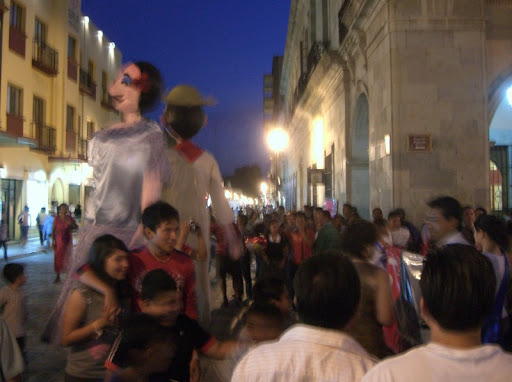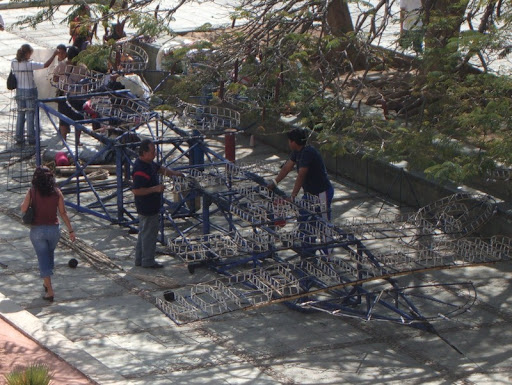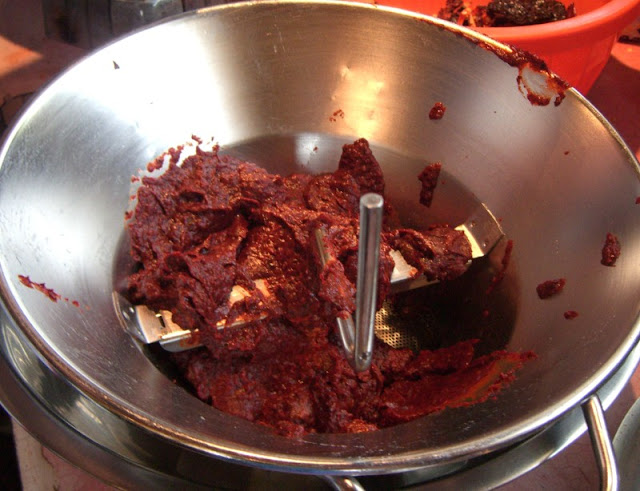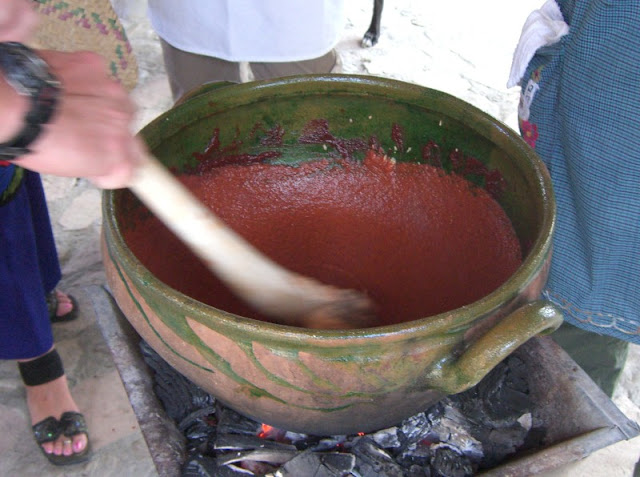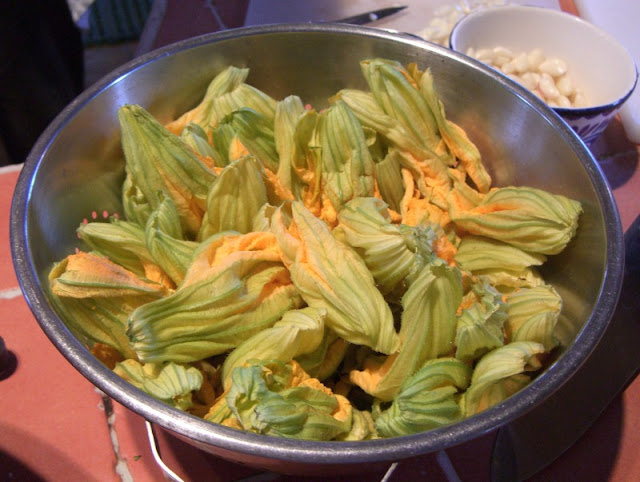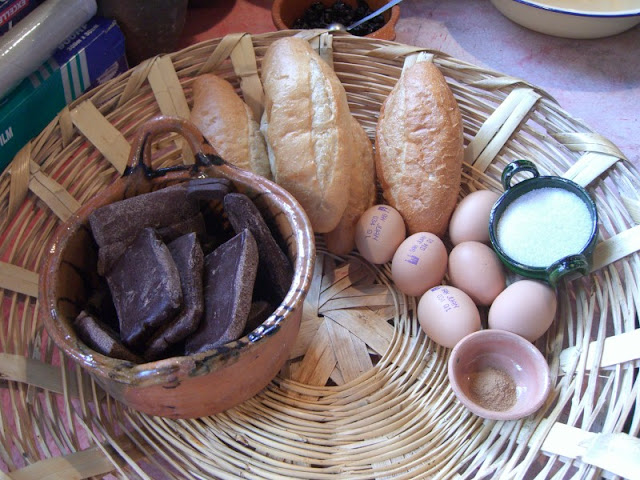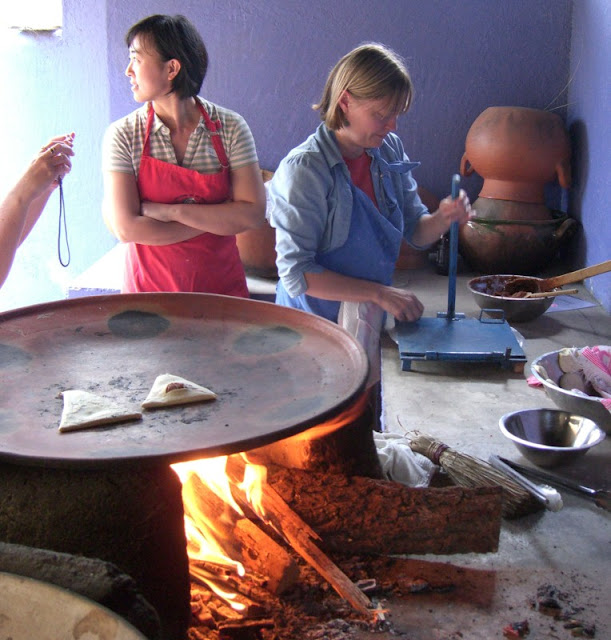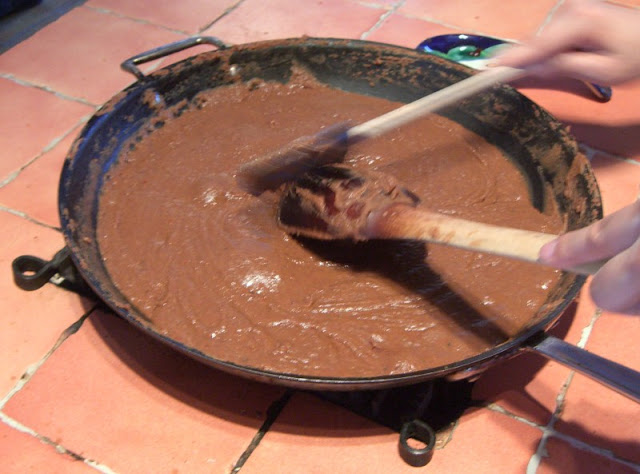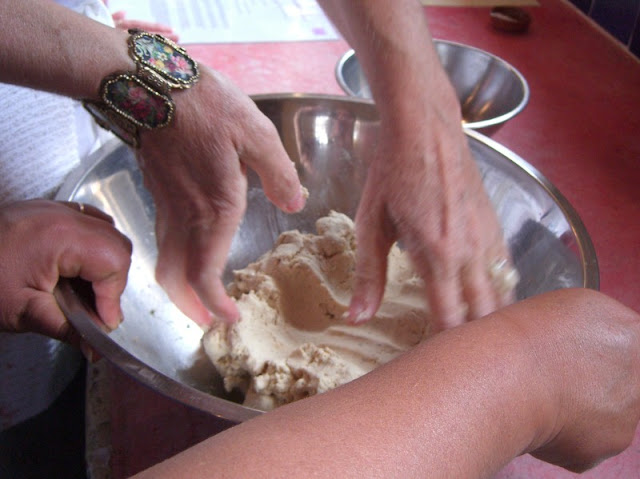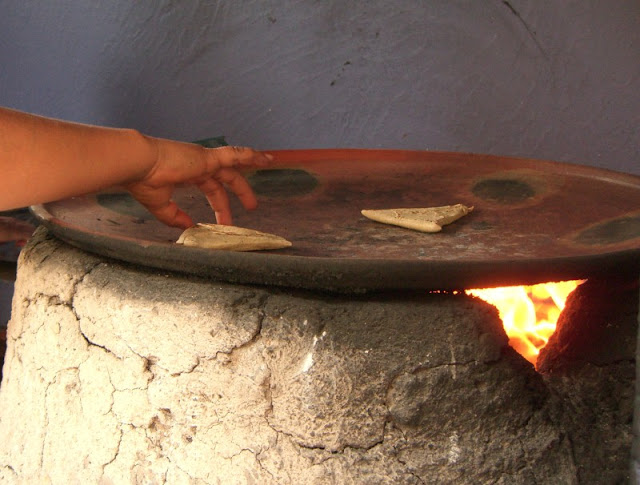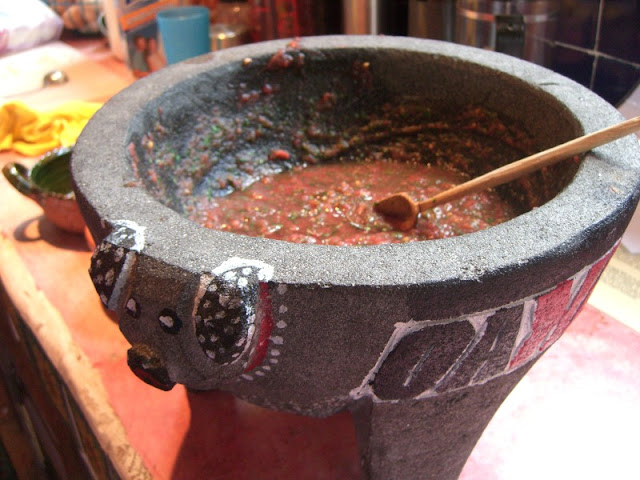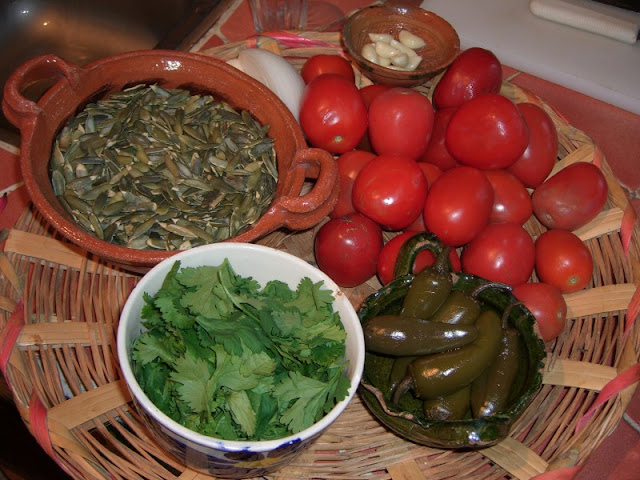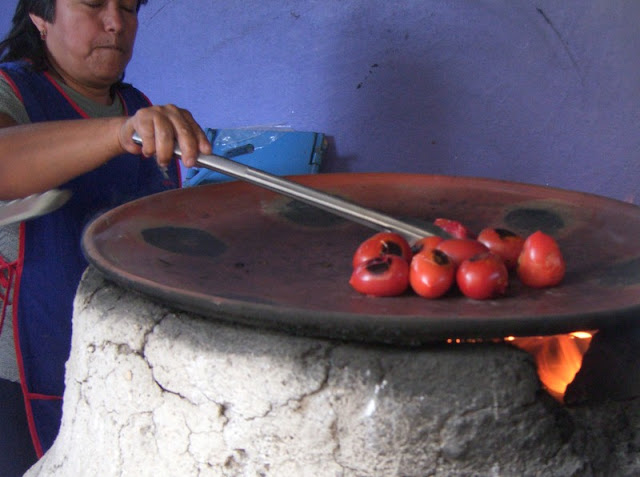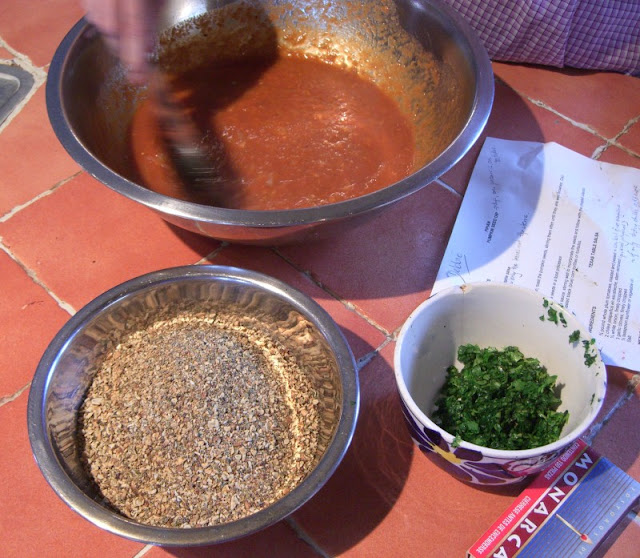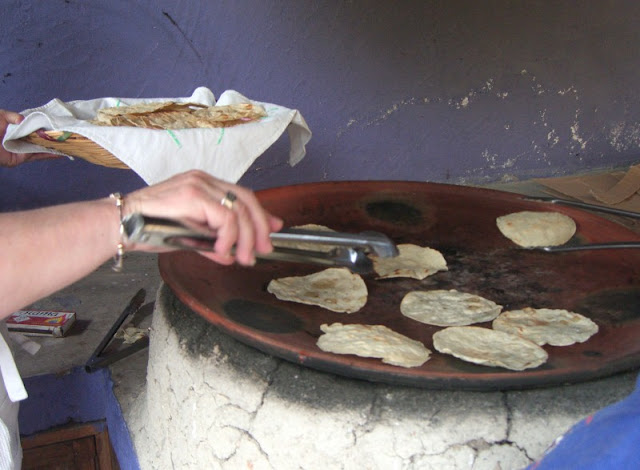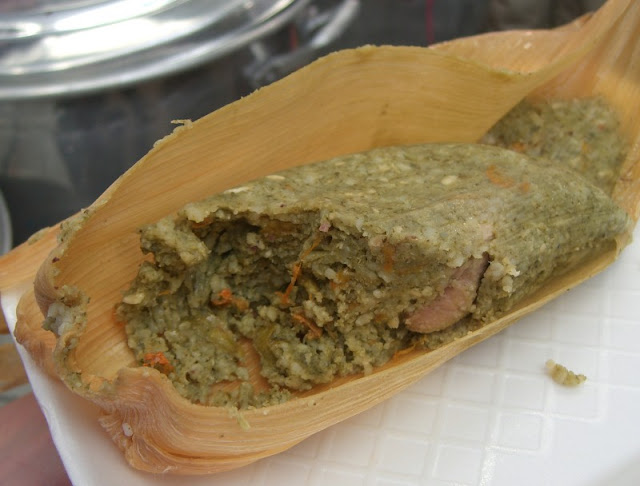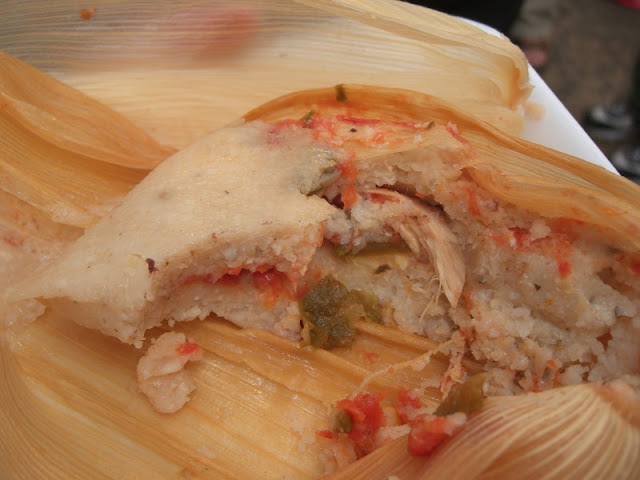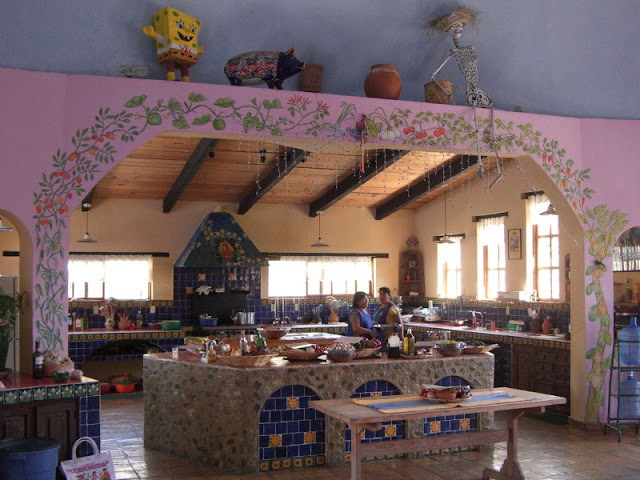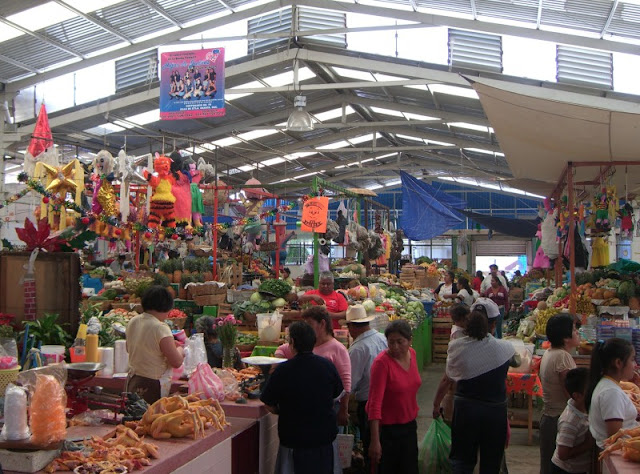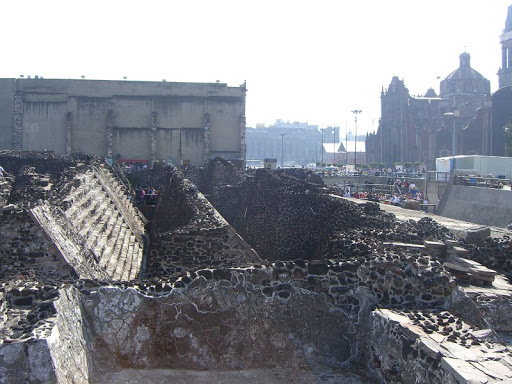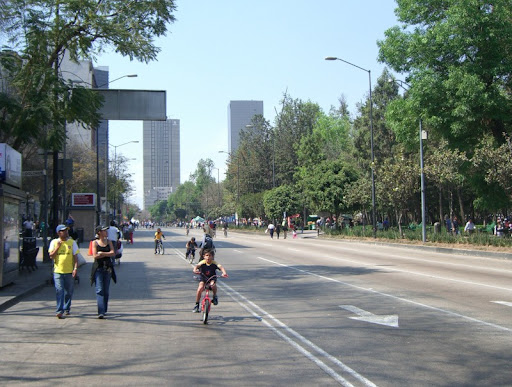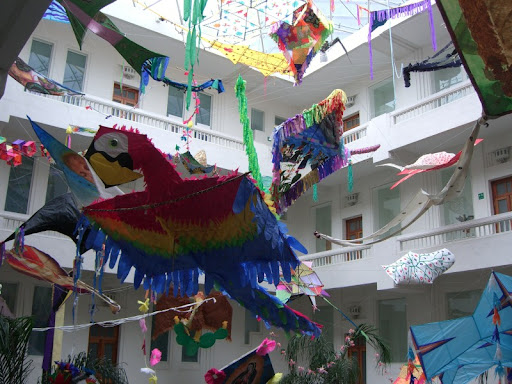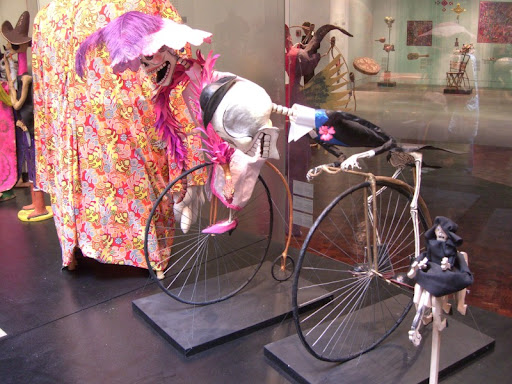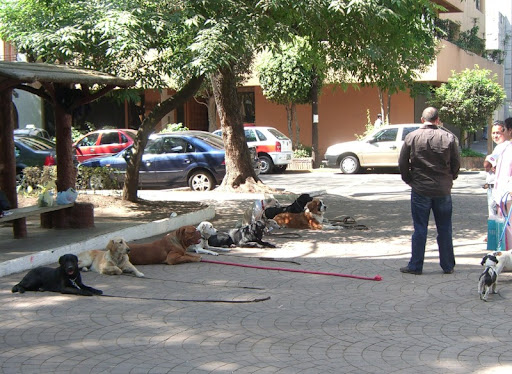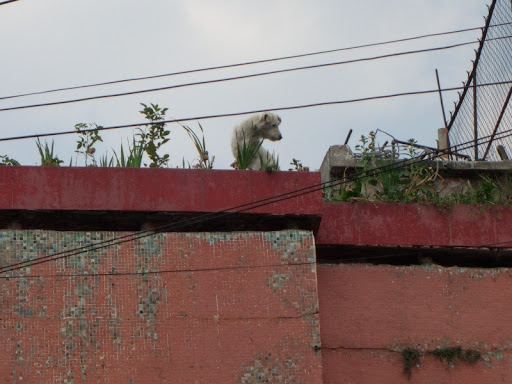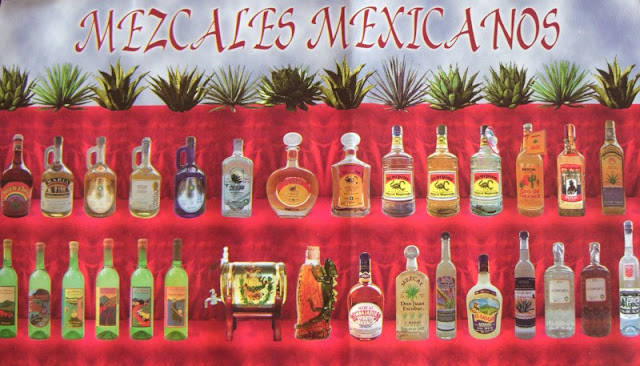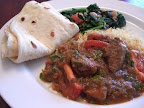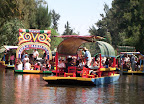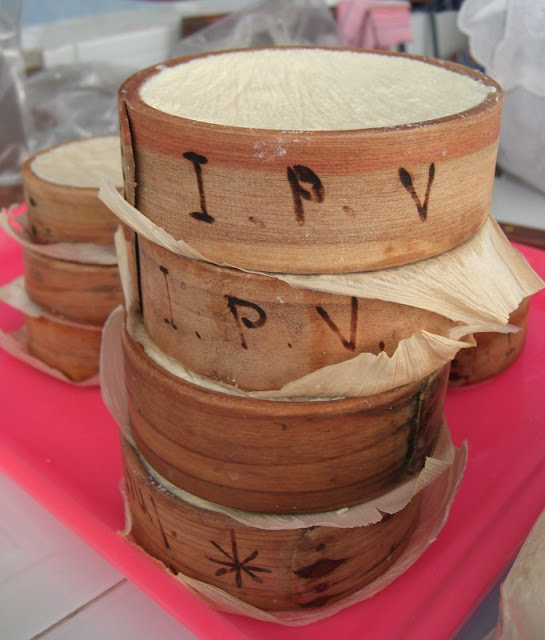
After our tamal stop, we visited one of the cheese ladies to taste the three major cheeses of Oaxaca - quesillo (the Oaxacan "string cheese" you get melted in quesadillas), requesón (a ricotta-like cheese), and, pictured above, queso fresco (the salty cheese they crumble on top of beans - my favorite).
We tasted some yucca root that had been cooked, peeled, sliced and topped with honey. Yucca doesn't taste like much by itself (to me, at least), but it was quite nice with the honey.
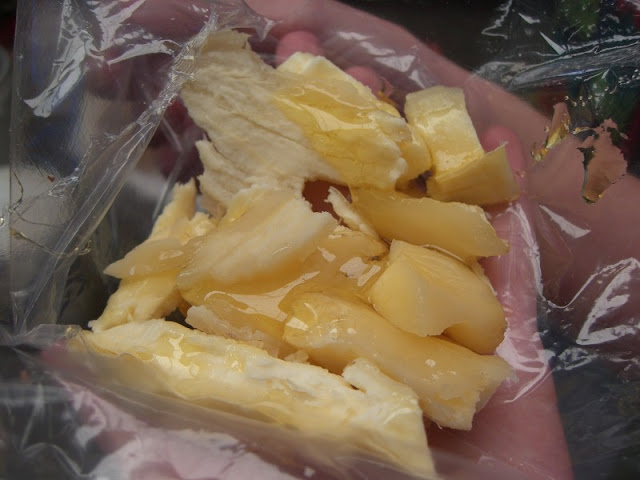
One of the more interesting things we tried was Nicuatole, a gelatinous dessert that is made from maíz. It tasted kind of like horchata jello.
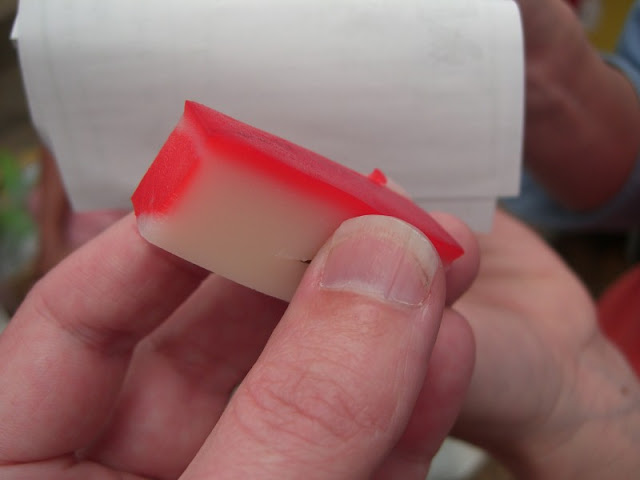
We've seen this ice cream making setup in a number of places now. They have cylindrical metal containers full of the ice cream base, and they freeze it by spinning it around in a larger container of ice. The flavor in the middle apparently tastes like burnt milk. We didn't try it, but instead enjoyed what I think was a walnut or almond flavor, and one that was a basic custard flavor.
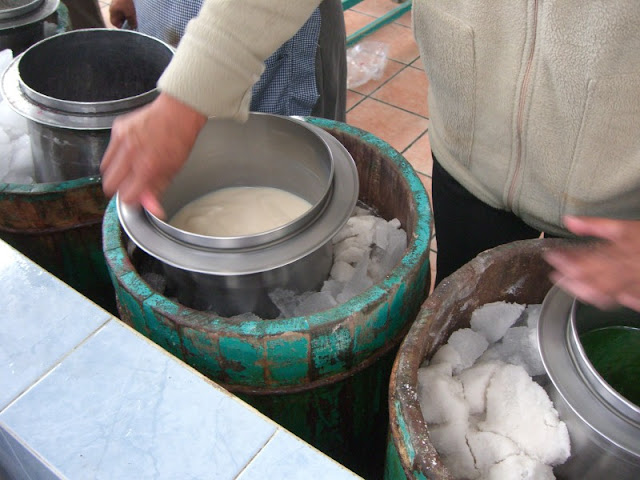
We shared a bowl of Chocolate Atole, a masa-based drink. The froth is supposed to be the best part. Wikipedia says it is the same thing a champurrado, but this version tasted quite different to me than the champurrado I've had.
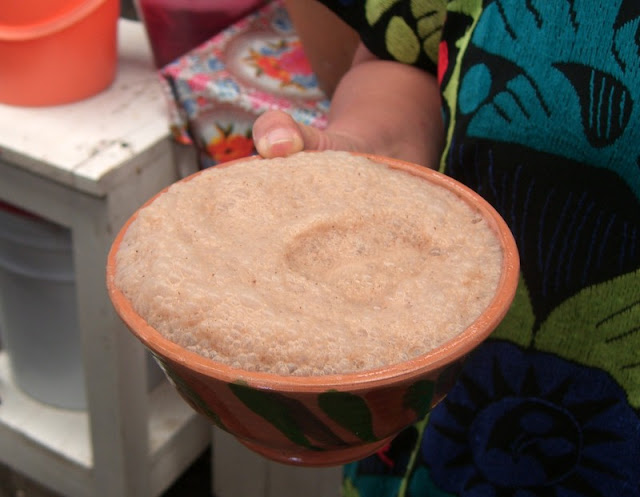
Another similar beverage we tried was Tejate, which is a very traditional Oaxacan drink made from, among other things, maíz and the flowers of the Quararibea tree. The vendor had a huge vat of it, and it was very popular with the crowd.
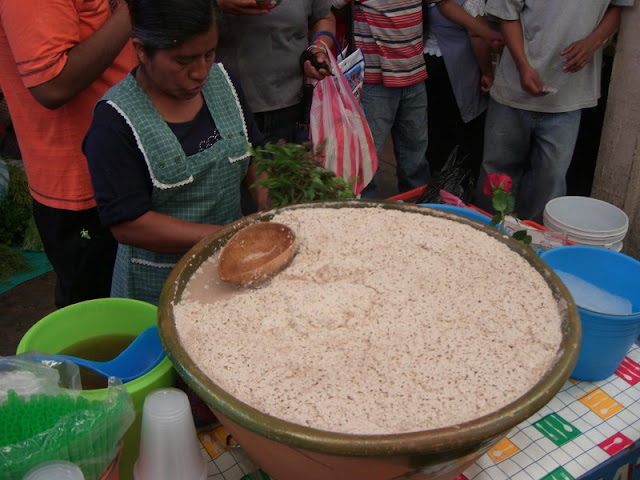
Even though we were already getting full from our tastings, we stopped in a fonda for lunch. We had Enfrijoladas (basically corn tortillas folded up and then covered with a black bean sauce).
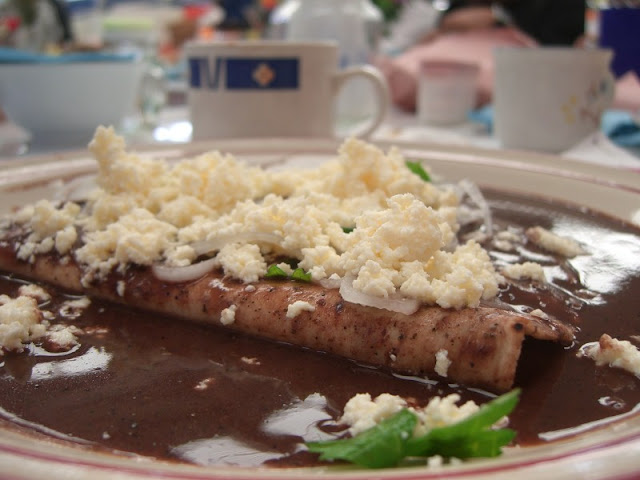
And Entomatadas (the same dish, but with a tomato sauce instead).
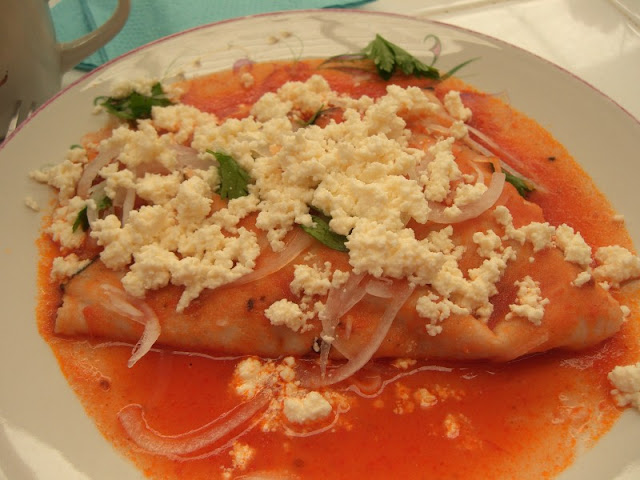
For dessert, we had a sweet Oaxacan bread. I'm not sure what it is called, but it seems quite common as we've seen it for sale from street vendors as well.

